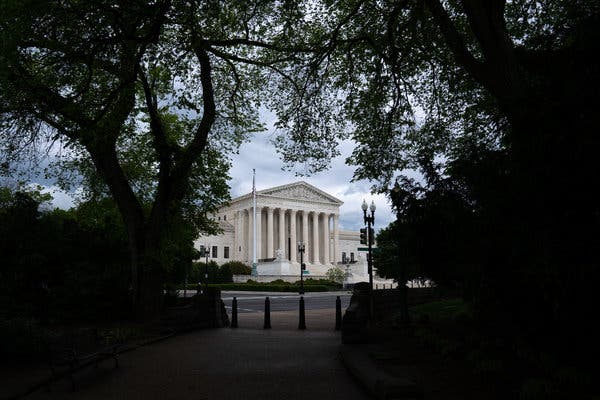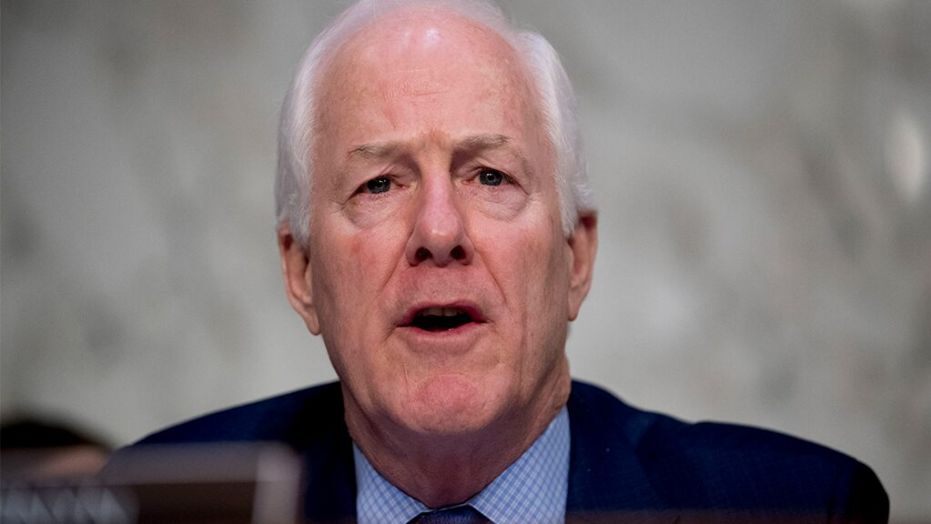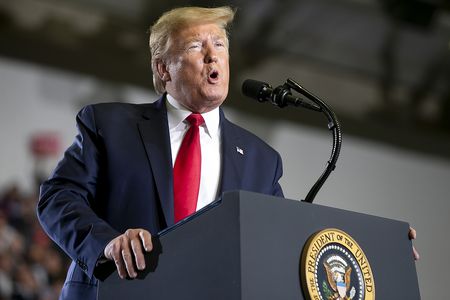Advertisement
President Trump’s promises to evangelicals on judges were a key part of shoring up support in 2016. Some Biden backers want to see him run on the courts this time, too.

President Trump this month celebrated the confirmation of his 200th lifetime appointment to the federal bench, outpacing his predecessor by dozens through three-and-a-half years.
Campaign supporters of Mr. Trump and Senator Mitch McConnell, the Republican majority leader, have been urged to buy T-shirts saluting the two men as “Back-to-Back Supreme Court Champs,” their faces rendered in white silhouette with “Gorsuch” and “Kavanaugh” etched on the sleeves.
And four years after the battle over a court vacancy helped deliver Mr. Trump to the White House, the president hopes to keep his job by playing the hits: He has pledged to produce an updated roster of would-be justices to galvanize the right before November, warning that his Democratic opponent, Joseph R. Biden Jr., would nominate “a radical lefty” as a slate of major cases returns the judiciary to the political fore.
“Based on decisions being rendered now, this list is more important than ever before,” Mr. Trump wrote on Twitter. “VOTE 2020!”
That message arrived well before the court’s latest ruling to disappoint conservatives on Monday: a 5-4 decision striking down a law restricting abortions in Louisiana.
By their own account, Democrats have long found themselves outmaneuvered in electoral fights over the courts. Exit polls from 2016 showed Mr. Trump winning by double digits among those who called the Supreme Court the “most important factor” in their vote.
Most memorably, Mr. Trump made the novel choice to publish a list of prospective nominees, shaped by leaders from conservative groups like the Federalist Society, supplying specificity (at least on this subject) from a candidate prone to ideological shape-shifting.
“It gave certainty to people who didn’t know the president — and I was one of them,” said Penny Nance, the chief executive of Concerned Women for America, a conservative Christian group. “It was probably the No. 1 issue when we looked at the polling of what brought conservatives to the voting booth in 2016. I think it will be a top-of-mind issue, certainly, in 2020.”
Trailing in the polls amid overlapping national crises that he has strained to corral, Mr. Trump seems even more likely to place the courts, an area of unambiguous conservative triumph, at the center of his case for re-election.
Whether Democrats can harness their own enthusiasm on this score is at once uncertain and potentially critical to election fortunes this fall, both in the presidential race and several competitive Senate contests where the Republican incumbents’ Supreme Court votes might figure prominently. (In Maine, Senator Susan Collins’s support for Justice Brett M. Kavanaugh in 2018 attracted wide-scale scrutiny — and millions of dollars in donations against her — before she had an official opponent.)
Recent years have produced no shortage of seminal moments to mobilize Democrats around matters of the judiciary: the confirmation of Justice Kavanaugh; the non-confirmation of Judge Merrick B. Garland; the Supreme Court’s refusal in April to extend the deadline for absentee voting in Wisconsin during a pandemic.
Still, some in the party sense an asymmetry in how urgently many Democratic voters think about the courts.
“I do think it has picked up in visibility, but I don’t think it moves millions to the polls in the way that it really should,” said Senator Chris Coons, Democrat of Delaware and a close Biden ally. “That’s the challenge that remains before us.”

Progressives have suggested that Mr. Biden, the former vice president, could prompt excitement by releasing his own list of preferred judges. Some activists have urged him to embrace a proposal to expand the size of the Supreme Court.
Mr. Biden has done neither, though he has promised to nominate a black woman to the court and said that the judiciary was “the single most important reason” that his wife, Jill, wanted him to run in 2020.
John Anzalone, a pollster and adviser for Mr. Biden, said that much of the modern Democratic electorate plainly grasped the significance of the courts. A Suffolk University/USA Today poll in April found that Democrats were slightly more likely than Republicans to call the Supreme Court one of the most important issues affecting their vote.
“I do think that women — college-educated women, suburban women — are without a doubt a much bigger part of our coalition,” Mr. Anzalone said. “And they’re much more awake to the ramifications of replacing a Ruth Bader Ginsburg. That is real.”
Democrats had been bracing for possible disappointment in the Louisiana abortion case, among other decisions pending before the end of this court term.
But two high-profile rulings had already come as a pleasant surprise to them: one holding that a landmark civil rights law protects L.G.B.T.Q. employees from workplace discrimination and another preventing Mr. Trump from immediately proceeding with plans to end a program shielding young immigrants from deportation.
While welcoming the outcomes, activists have advised Democrats to beware a conservative majority bearing gifts.
“The court’s not evil 100 percent of the time,” Meagan Hatcher-Mays, the director of democracy policy at Indivisible, said before Monday’s decision. “But they’re evil, like, 94 percent of the time.”
Such successes can, paradoxically, register as something of a narrative complication for those arguing that the court is stacked against the left.
Brian Fallon, the executive director of Demand Justice, a progressive group, suggested that Chief Justice John G. Roberts Jr. understood as much — and was steering the court accordingly.
“These rulings are enough to convince a lot of people on the left that they should continue to play within the system and not offend sitting federal judges by calling them out as overly political,” he said. “In some sense, that is the exact game that Roberts is playing: to side with the liberals in just enough cases so the public misses the larger trend of this court’s rightward swerve.”
The chief justice has nonetheless angered many Republicans who appraise his tenure as a failure, recalling him siding with the court’s liberal wing in cases challenging core provisions of the Affordable Care Act. In the abortion ruling on Monday, he voted with the liberal justices but did not adopt their reasoning, saying that deference to precedent compelled him instead.
Some critics of Mr. Roberts hold high office: “Do you get the impression that the Supreme Court doesn’t like me?” Mr. Trump wrote on Twitter this month.
Conservatives say that, if anything, the Roberts era has demonstrated the need for Mr. Trump to fill vacancies for another four years.
“Frustration with the chief justice and concern about the direction the courts were going was part of what galvanized conservatives in the first place to elect someone like Trump,” said Carrie Severino, president of the conservative Judicial Crisis Network.
By prizing “courage” in addition to credentials, Ms. Severino said, Mr. Trump’s approach “is almost designed to avoid a future John Roberts,” whom she accused of operating with politics in mind — in some ways echoing the charge of his progressive skeptics.
She also joined some liberal counterparts in calling for Mr. Biden to release a list of potential nominees.
Many Biden supporters see little need for that step because, unlike Mr. Trump in 2016, the former vice president has an exhaustive record on judicial affairs, including an extended tenure as chairman of the Senate Judiciary Committee.
Those close to Mr. Biden are rarely eager to dwell on the treatment of Anita Hill before his committee at the confirmation hearings for Justice Clarence Thomas. But others cite his work to defeat the nomination of Judge Robert H. Bork in 1987 as a towering feat for Democrats — and a turning point for a chamber that had previously been disinclined to reject a nominee for primarily ideological reasons.
“I don’t think there’s ever been any president — assuming Biden’s elected — who knows as much about or has been as involved in shaping the Supreme Court as Joe Biden,” said Mark Gitenstein, who led Mr. Biden’s Judiciary Committee staff during the Bork fight.
And those who have doubted Mr. Biden in 2020, he added, were hardly the first.
“The irony of the Bork fight is it’s not unlike what you’re seeing now,” Mr. Gitenstein said. “People totally underestimated Biden.”
Giovanni Russonello contributed reporting.
-
- Joe Biden has taken a commanding lead over President Trump in the 2020 race, according to a new national poll by The Times and Siena College.
-
- Fears about the coronavirus reduced the number of polling places and led to a surge in absentee balloting that delayed the results, possibly for days.
-
- Here are 13 women who have been under consideration to be Joe Biden’s running mate, and why each might be chosen — and might not be.
-



